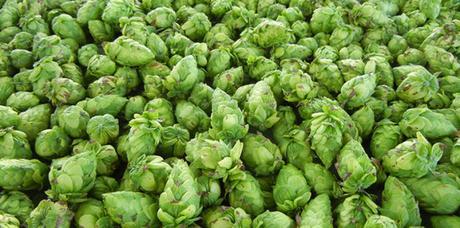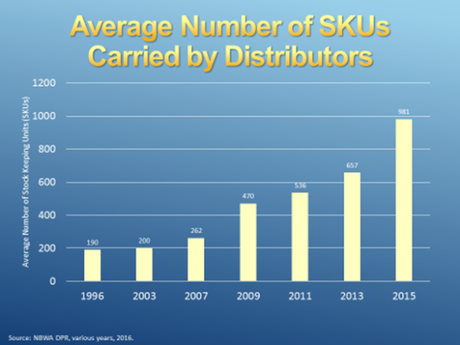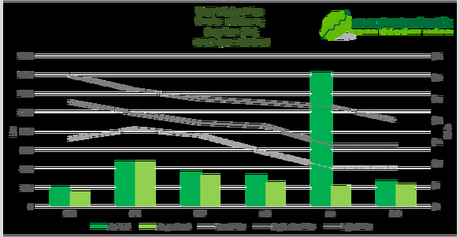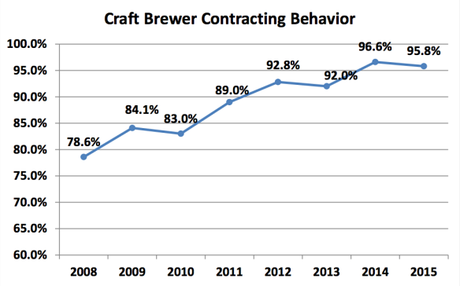
At our current state of human evolution, our attention span is reportedly eight seconds. That's less than a goldfish.
By one estimate, the amount of time we can pay attention to a singular beer brand is three years. I'm sure there are many who would argue that number is actually less and, like our regular attention span for everything else in life, is shrinking rapidly.
It makes sense, given the rise in the number of brands carried by distributors and how many end up on the shelves of our local beer aisles, making us spend more and more time simply figuring out what it is we're going to buy.

Whether or not we're staring down the threat of the death of flagship brands, we can't deny the effort by brewers to create, adapt and - dare I say - "innovate" in order to stay relevant to today's consumers who are constantly looking for something more. It's a virtuous cycle: drinkers like something new, brewers like creating something new and the loop goes on.
So when it comes to addressing the availability of hops and what people want, one of the trendy techniques in craft beer is offering a smart approach.
"If you look at data for beer styles, the number one style is IPA and the number two is variety," said Ray Goodrich, director of marketing for North Carolina's Foothills Brewing. "People like trying new stuff so that's what we're going to give them."
He should know. Foothills is now in year three of an ongoing experiment, releasing a new IPA brand every month featuring different hops and flavors. Every 30 days, a 90-barrel batch is put into 22-ounce bombers and distributed across Foothill's distribution footprint. With the exception of one month, Goodrich said he's always seen their IPA of the Month or Hop of the Month beers sell out.
Given the myriad of situations facing the cross section of hops and the beer industry, the move to stay fresh and relevant is simple: it's the rotating IPA.
Goodrich is right: combining American beer drinkers' favorite aspects is a win-win. When craft beer sales are dominated by IPA, offering a continuous collection of new options is almost guaranteed to be a hit.
IPA made up 36% of national craft beer volume growth between 2011-2015.
In 2016, IPA made up 95%!! #CABeerSummit
- Nick Miller (@NickMiller510) September 9, 2016
You can point to Utah's Epic Brewing as one of the leaders of this idea, which kicked off its Exponential Series Imperial IPA back in 2010. What a time that must've been, when Simcoe and Amarillo led the "exotic" charge to beer enthusiasts.
"It was part of our DNA as a brewery," said David Cole, co-founder of Epic. "We wanted to play with all these crazy, different hops and consumers really seemed to love that."
Since the initial batch, Epic has gone on to create 52 more of their rotating imperial IPAs, the most recent still utilizing Simcoe and Amarillo, but also charged with current hop darlings Mosaic and Citra.
In Epic's wake, Widmer Brothers picked up the baton in 2011 with their Rotating IPA series, then came a whole host of other breweries in recent years: Weyerbacher, Victory, Green Man and more. This year, Firestone Walker began its Luponic Distortion series, a base beer that features a new collection of rotating hops every few months. The first batch, released this spring, quickly jumped to become the company's third best-selling beer.
To Cole, who helped start things six years ago, the rise in popularity of the rotating IPA makes perfect sense - and even goes beyond the fact that sales clearly show beer lovers are looking for something new and different on a regular basis.
"It's almost entirely grown out of the broader knowledge of consumers," he said. "They read about a batch of New Zealand hops described as 'guava' and 'tropical' and they want to try it. People are want to understand what gives their beer flavor and then calibrate their own ideas about different hops."
Naturally, there's a benefit of curiosity for brewers, too.
"Our concept came out of the idea that we enjoy hoppy beer, but as a very young brewery, we didn't have access to the cool, sexy hops we wanted to use to make an IPA that met today's flavor profiles," said Rob Burns, co-founder and brewer for Massachusetts' Night Shift Brewing. "We decided to blend what we could get to create a concept that was always changing based on our hop sourcing abilities."
What came out of the plan was the aptly named Morph series. Since August 2014, Night Shift has created almost 40 different batches of the beer, tweaking aspects each time to highlight different flavors and letting Burns and colleagues play to figure out what does and doesn't work for IPA lovers. A dedicated page on Night Shift's website helps to set expectations, offering hop selections and tasting notes.
In late 2015, after securing hop contracts, there was consideration to discontinue Morph since Night Shift had an IPA (Santilli) and double IPA (The 87) in regular production. Consumer demand said otherwise.
"I was talking to a hop supplier who asked what we do if stores have overlapping batches of Morph on the shelf," Burns said. "My answer was 'that never happens.' Getting an understanding of the process and what goes on behind the scenes of making a beer is considered cool."
When the rotating IPA was first brewed in 2014, it started out as 20-barrel batches. Now it's done in 60-barrel increments.
The success of Night Shift and others with creating an ever-changing IPA showcases an important aspect of the beer industry: regardless of a brewery's size, there's some wiggle room with this particular "style" of IPA. Whether it's a startup or established player, finding new ways to breathe life into a brand can be as easy as changing a few ingredients. In some cases, it may even be getting more cost efficient to do so.
While contracts can assure a brewery a continuous flow of hops, the spot market continues to play an pivotal role, especially with a looming threat of a hop shortage occasionally being reported. But at places like the Lupulin Exchange, an online marketplace to buy and sell hops, some examples show business is healthy for brewers interested in finding varieties to mix and match with their own brands.
In a blog post from the beginning of this month, Lupulin Exchange's John Bryce offered an update on the potential for over-contracted brewers, causing a decrease in some hop prices. The overall average of hops listed on the website went up in 2014 and started to drop in 2015. In some cases, that trend has continued:
Today, you can find more than 11,000 lbs of Mosaic parked on LEx in the $15-20 range. This would've been unimaginable only a few months ago. Mosaic isn't cheap, but the average price is approaching half that of early 2016.

Other varieties saw decreases, including Simcoe and Amarillo, which is certainly a difference from just a few months ago.
$19/lb for Amarillo on contract? Get the fuck outta here with that nonsense. Beer consumers, get ready to start paying a lot more soon
- Alex Tweet (@MrAlexTweet) July 15, 2016
Even public varieties like Cascade and Centennial have seen dropping prices.
Three years ago, the Barth Haas Group estimated 125 hop varieties in common use worldwide. This summer, that amount jumped to 155. Not all of these are available to everyone, but emphasizes the situation, that options can be plentiful for brewers, especially when variety and "new" is king. If the growth of the American hop market is impacted by lower yields, too few farms and what needs to be grown to serve a thirsty audience, there are ways to work around these challenges, whether that's how hops are used or what brewers want and can buy.
In conversations with brewers and owners around the industry, there is a continued stress around what can be contracted and guaranteed, and rightfully so. The trend to lock in ingredients is crucial to the success of a business, but even more so when we're talking about the key to America's favorite style of craft beer.

But given all the obstacles that may face the beer industry when it comes to hops, the success of the rotating IPA is surely a bright spot. In recent years, utilized by many different breweries for many different purposes, it's shown to be a powerful tool to boost sales and work around changing logistics facing raw materials.
Most of all, it allows brewers to keep giving drinkers what they want.
"Craft beer people in general seem to be fairly free-spirited and adventurous," said Goodrich, the director of marketing with Foothills. "We all depend on an audience that wants to try new things and the great thing about this is how it can be different and accessible for anybody."
Welcome to "Hop Week," an opportunity to look into how the production of hops impacts the beer industry, agriculture and drinkers.Bryan Roth
"Don't drink to get drunk. Drink to enjoy life." - Jack Kerouac

